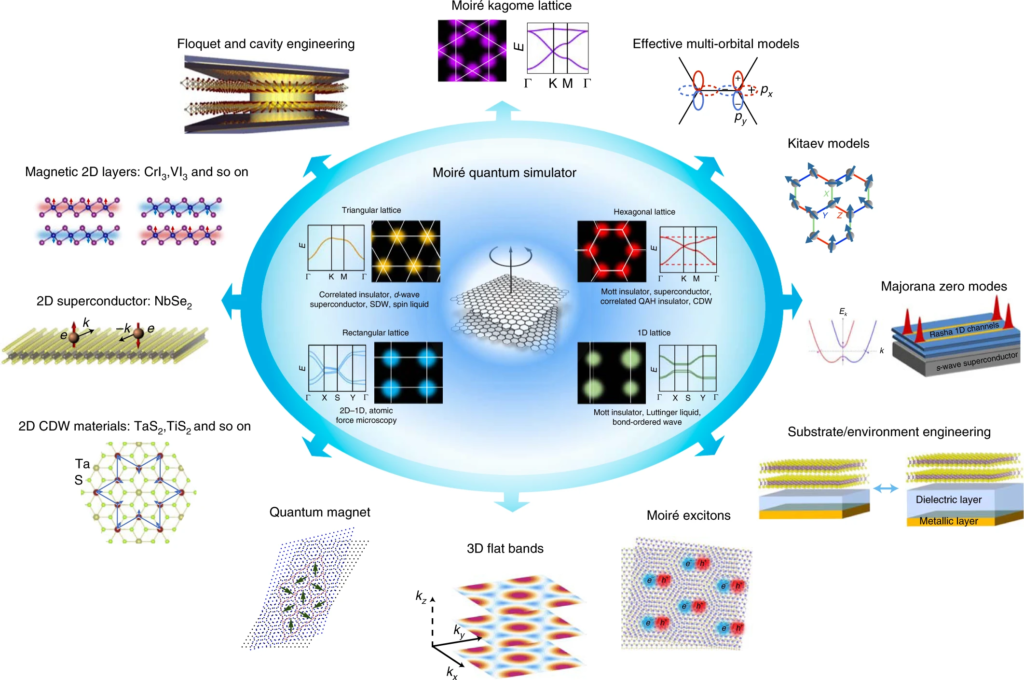
Stacking sheets of van der Waals heterostructures with a twist gives rise to a plethora of effective low-energy Hamiltonians. Some of these realizations that were studied in the literature are given in the inner circle of the figure with the corresponding lattice, band structure and potential phases of matter that can be realized. For the red band structure, the dashed lines indicate the flat bands additionally present in the case of twisted bilayer MoS2 compared with TBG. In the outer circle, we outline a perspective on possible future directions of moiré quantum simulators with many intriguing developments to be expected. k, kx, ky and kz denote momentum and momentum in the x, y and z directions, respectively. E and Ek refer to band energy. ((c) Dante M. Kennes et al./Nature) Click to enlarge!
Together with researchers from the Max Planck Institute for Structure and Dynamics of Matter in Hamburg, the Flatiron Institute, Columbia University, and the Max Planck – New York City Center for Non-equilibrium Quantum Phenomena, Dante Kennes published results on the potential of twisted van der Waals materials that could enable exotic matter in Nature Physics. The findings are significant for basic research as well as applications in materials science and quantum information technology.
Publication: Kennes, D.M., Claassen, M., Xian, L. et al. Moiré heterostructures as a condensed-matter quantum simulator. Nat. Phys. 17, 155–163 (2021). https://doi.org/10.1038/s41567-020-01154-3
https://www.nature.com/articles/s41567-020-01154-3
Link to the press release [in German] of RWTH Aachen
Browse the ML4Q News Archive